
Related
Guests
- Elizabeth Hintonassociate professor of history and African American studies at Yale University and a professor of law at Yale Law School.
Protests and vigils were held across the U.S. to mark one year since the police murder of George Floyd in Minneapolis. Floyd’s death sparked a national uprising and global movement against systemic racism and police brutality. Elizabeth Hinton, an associate professor of history and African American studies at Yale University and a professor of law at Yale Law School, connects the Black Lives Matter protests to a long history of Black rebellion against police violence in her new book “America on Fire” and notes that the U.S. has had previous opportunities to address systemic racism and state violence, but change remains elusive. “Every time inequality and police violence is evaluated, all of these structural solutions are always suggested, and yet they’re never taken up,” Hinton says.
Transcript
AMY GOODMAN: Protests and vigils were held across the country and the world Tuesday to mark one year since the police murder of George Floyd in Minneapolis. Floyd’s death sparked a national uprising and global movement to end racism and police brutality.
On Tuesday, President Joe Biden and Vice President Kamala Harris met with family members of the Floyd family. Biden reiterated his support for the George Floyd Justice in Policing Act, which is still being negotiated by senators. Civil rights attorney Benjamin Crump joined the Floyd family in Washington and urged passage of the legislation.
BENJAMIN CRUMP: Their blood is on this legislation, so we’re going to continue — with this family and this legal team, to continue to press, to say, “Yeah, we have to respect the spilled blood that’s on this legislation. It must be meaningful, and we can do this together.” This is an American issue. This isn’t a police issue or civil rights issue. We have to look at this as a national issue that we have avoided dealing with.
AMY GOODMAN: Here in New York, the Reverend Al Sharpton paid tribute to George Floyd Tuesday.
REV. AL SHARPTON: George Floyd should not just go down in history as a martyr. He should go down in history as the turning point of how we deal with policing in the United States.
AMY GOODMAN: We’re joined now by the historian Elizabeth Hinton. She’s an associate professor of history and African American studies at Yale University and professor of law at Yale Law School. Her new book is America on Fire: The Untold History of Police Violence and Black Rebellion Since the 1960s. She’s also author of From the War on Poverty to the War on Crime.
Professor Hinton, welcome to Democracy Now! It’s great to have you with us. Why don’t we start off by this significant week, the first anniversary of the police murder of George Floyd, not only the story of the murder, but the story of the unprecedented rebellion that ensued for the next year?
ELIZABETH HINTON: Well, so, what we witnessed last summer was what some have called the largest mass mobilization in United States history. And let me point out that most of the protests last summer were nonviolent. It was only after police came to nonviolent protests and peaceful vigils, and with tear gas and riot sticks and batons, that some protesters responded to that police violence with violence, which is a familiar pattern that we see from rebellions stemming from the 1960s. But the vast majority of what we saw last summer were nonviolent, peaceful protests, Americans and people around the world standing up to racial injustice and saying, “We want a different kind of governance. We want to build a different kind of society. And we don’t want to continue to have to bury people of color at the hands of police officers.”
JUAN GONZÁLEZ: And, Professor Hinton, I wanted to ask you. Your book tries to put what is happening now in the historical context, because, obviously, many of the young people who are participating in these protests don’t know a lot of the history. And what I think struck me was that you went not only into the period of the 1960s and '70s, which was crucial, but even further back, pointing to some of the civil disturbances and rebellions that had occurred in prior decades. I've always been particularly struck by the impact of world wars, both World War I and World War II, on racial unrest in the United States and how the returning soldiers often then were not as willing to — Black and Latino soldiers were not as willing to accept injustice. Could you talk about the early teens of the 20th century and this historic conflict between Black communities and the white establishment?
ELIZABETH HINTON: Right, that’s such an important part of our history that I think we fail to recognize. And that’s that for most of the 20th century, the majority of collective violence was inflicted by white mobs against communities of color, and especially Black communities, very much in the context of migrations stimulated by, as you said, Juan, the First and Second World Wars.
So, you know, beginning in Springfield in 1908, but then also in East St. Louis in 1917, basically, white residents in East St. Louis attacked Black wartime factory workers in one of the bloodiest race riots of the 20th century, forcing Black families to choose between being shot to death or burned alive, and then, of course, the Red Summer of 1919, as you mentioned, with returning GIs, who had fought for democracy abroad, returning GIs of color, wanting to stake a claim for citizenship and saying, “OK, we fought for democracy abroad. Now let’s realize democracy at home.” When faced with continued segregation and white vigilante terror and violence, we saw the outbreak not only of racial strife in the streets of American cities like Chicago and Washington, D.C., but also the continued attacks by white vigilante forces on Black communities. And then, of course, we’re coming up next week on the 100-year commemoration of the Tulsa massacre, where thousands of white men, who were deputized by the county government, destroyed, completely destroyed, the thriving Greenwood community in Tulsa.
And these examples of white vigilante terror — and, let me also emphasize, deeply entwined with law enforcement. I mean, law enforcement was complacent in many of these episodes, in many of these massacres and attacks on Black communities, turned a blind eye, or actively participated in the violence. And then, of course, during and after World War II, the kind of — the race riots that we saw after World War I, literally street fights between Black and white residents, in places like Detroit, where federal troops had to be called, persisted. And I think what’s really important about this back history and this history of white collective violence is that it was only in the 1960s, when Black people rose up against repressive and exploitative institutions, that these incidents of collective violence became labeled as criminal and as riots.
AMY GOODMAN: I wanted to stick with, for one minute, Tulsa. We’re going to have Stanley Nelson, the great filmmaker, on, on Friday, because he has a documentary that’s going to air on Sunday, on the centennial of the Tulsa massacre. But last week, three survivors of one of the worst racial terror attacks in U.S. history testified to Congress in favor of reparations ahead of the 100th anniversary. Over two days, beginning May 31st, as you described, 1921, racist white mobs basically burned down Greenwood, the thriving African American business district in Tulsa known as “Black Wall Street.” This is 107-year-old Viola Fletcher, the oldest living survivor, testifying before Congress.
VIOLA FLETCHER: I will never forget the violence of the white mob when we left our home. I still see Black men being shot, Black bodies lying in the street. I still smell smoke and see fire. I still see Black businesses being burned. I still hear airplanes flying overhead. I hear the screams. I have lived through the massacre every day. Our country may forget this history, but I cannot. I will not. And other survivors do not. And our descendants do not.
AMY GOODMAN: Again, that was 107-year-old Viola Fletcher, the oldest living survivor of the Tulsa massacre, where something like, it’s believed, 300 African Americans were killed. Even people in Tulsa, even African Americans, talk about how is it possible that they did not know this history, not to mention people throughout the United States over this last 100 years that this wasn’t taught, Professor Hinton.
ELIZABETH HINTON: Yeah, I think there are many aspects of, one, the extent to which white supremacist terror has — the impact of white supremacist terror in Black communities, and also state-sanctioned violence. I mean, I think that’s one of the things that I attempted to do in this book, America on Fire. Based on new data, we now know that, you know, in the aftermath of Martin Luther King’s assassination, violent political rebellion to the presence of police and the expansion of American police forces and the militarization of police in targeted low-income communities of color was responded to by political violence on — mostly perpetuated by young African Americans. And this was the most widely adopted form a protest after the civil rights movement. So, it’s a story both of continued white supremacist terror that gets hidden, but also of Black resistance to that terror and to police violence, that we have yet to reckon with.
JUAN GONZÁLEZ: And, Professor Hinton, one of the, I think, most interesting observations in your book was the — to me, was that most people associate the federal government’s involvement on the war on crime as coming during the Nixon years, but you show how it was really under President Johnson that the real expansion of the federal support for local law enforcement — you note, in one section of your book, that in 1964 there was only $10 million in federal funds given to local police, but by 1970 it was over $300 million — an enormous increase just in the late 1960s under President Johnson’s Safe [Streets] Act. Could you talk about that and the impact that that had on local police forces?
ELIZABETH HINTON: Right. And just to give listeners a sense of what that $300-$400 million dollars translates to today, it’s several billion dollars that was being invested in the expansion of American policing and courts and the prison systems, at the height of the civil rights movement and progressive social change in the 1960s.
And I think this is a really important aspect of our domestic policy and the kind of origins or the shortcomings even of liberal social policy, is that, you know, during the Johnson administration, there were kind of two approaches to dealing with both the threat of Black rebellion but also poverty and racial inequality in the U.S. And one of those, of course, was the War on Poverty Community Action Programs, remedial education, job training programs. And the other was programs that were intended to manage the material effects of poverty and inequality, as they appeared through violence and crime and the threat of rebellion, and that is, of course, the war on crime. And in the end, the war on crime won out. And the story of the Black rebellions themselves, as I see it, are residents’ responses to, again, the expansion of policing in their communities that accompanied this unprecedented federal intervention in local police forces for the first time in U.S. history, beginning with the Johnson administration in the mid-1960s.
JUAN GONZÁLEZ: Another aspect of your book, I think, that — and while you do focus and say that it was largely Black rebellions that occurred throughout the ’60s and ’70s, you do note several key rebellions that occurred in the Latino community. You talk about the Roosevelt Park rebellion in 1971 in Albuquerque, and also in Hoboken and Jersey City. But there was a string of rebellions that occurred in the Puerto Rican and Mexican communities: ’66 in Perth Amboy; ’69 in Passaic, in Hartford, Connecticut; in the Division Street riots in 1966 in Chicago; the Humboldt Park riots in Chicago in 1977. So, there were quite a few other communities of color that also rose up during this period, as well.
ELIZABETH HINTON: Yeah, and that’s also another kind of hidden aspect, I think, of our history of both racial oppression and resistance. And in many of those communities, like Hartford and Jersey City, you know, these were thoroughly multiracial rebellions, where Black and predominantly Puerto Rican residents rose up against police violence together. And, you know, by my count, from that — what I call the crucible period, after that major piece of federal legislation, the Safe Streets Act — so, from June 1968 through 1972 — there were about 2,000 rebellions in segregated Black communities and about 200 in Puerto Rican and Mexican American communities.
And I think, you know, this just underscores the extent to which the policing strategies, that policymakers and officials at all levels of a government embraced for the war on crime, really targeted youth of color in Latinx and Black communities. And as part of that targeting and those strategies, people in these communities were subjected to not only increased patrol and surveillance, but the increased police violence and brutality that accompanies that. And in the context of other shared socioeconomic conditions in communities of color — that is, mass unemployment, so lack of decent jobs, failing public schools and substandard housing, run by either absent public housing authorities or exploitative slum landlords — many of these communities that were overpoliced and underprotected became powder kegs, with a shared set of grievances related to the overall racial inequality in the country at the time.
AMY GOODMAN: I wanted to go to Attorney General William Barr, not under Trump, but in a 1992 appearance on Face the Nation, when he was attorney general in the administration of George H.W. Bush. Barr blamed gangs for the uprising in Los Angeles after a jury acquitted four white police officers in the brutal beating of Rodney King.
ATTORNEY GENERAL WILLIAM BARR: We’re investigating all the violence, the arson that was involved in the riots. Our preliminary information is that there was significant involvement of gang members at the inception of the violence, also involvement in the spreading of the violence and the arson.
AMY GOODMAN: I remember at that time, you know, the descriptions of those who were rising up being arsonists and vandals and gang members. Martin Luther King famously talked about a riot being the language of the unheard. Also, Juan, you were covering the L.A., what were called “riots.” Elizabeth Hinton, if you can talk about the language used to describe this — I mean, you use the word “rebellion” — and what it means when they’re called “riots,” when people are called “vandals” and “arsonists,” but the police are not called “murderers”?
ELIZABETH HINTON: Right. And so, you know, this goes back to this crucial moment in the '60s where, beginning with Harlem in ’64, Lyndon Johnson labeled this political violence as a “riot,” basically ignoring the underlying socioeconomic grievances, that were shared with the mainstream civil rights movement, that drove people to resort to political violence in the first place. And in labeling them riots and criminal, and ignoring the demands for job and better housing and better policing and protection from white vigilante terror, and full political and economic inclusion in American society, that drove the rebellions themselves, and calling them criminal, then the only solution becomes not what residents themselves want, but the police. And so, this is partly why terminology is so important. And also, you know, many of the people who participated in these instances of collective violence understood themselves as rising up, as rebelling, not as rioting, not as something that was criminal. And we've really got to get out of this criminal framework through which we understand these forms of political violence.
I think the other — that Barr quote is so illustrative and also gets to one of the points that Juan just raised, which is that the L.A. rebellion in 1992 was also thoroughly multiracial. And in addition to targeting gangs, so-called gangs, the federal government also, with the support and help of what was called INS at the time, also blamed, quote-unquote, “illegal aliens” for the violence. And so, the rebellion provided law enforcement authorities an opportunity to target two groups that had — that they had long been the subject of both national security and law enforcement attention. And again, you know, policymakers ignored the kind of larger grievances behind the rebellion, both the injustice that was the acquittal of the four officers for the brutal beating of Rodney King, kind of the first viral video of police violence, but also rampant inequality, unemployment and problems of violence and crime in many communities of color in Los Angeles that were not being adequately addressed, that were not being addressed with robust social programs but were being managed by a heavy-handed, militarized police that was literally rounding up people of color and arresting them en masse, beginning really in the 1980s.
JUAN GONZÁLEZ: And, Professor Hinton, I wanted to ask you about the lessons for activists today in terms of the response of the establishment, of those in power, to these rebellions. Whether it was in the 1940s or in the 1960s or even now, there is a period of time when the system, because — is taken aback by the mass upsurge and then agrees to certain reforms. In the case of the Rodney King situation, there was a second federal trial of the officers, that sort of sought to calm the public, and as we’ve seen with the Derek Chauvin trial now after George Floyd. But the promises of systemic change rarely occur. And what happens is, the system almost seems to wait until the movement subsides, and then goes back to its old way of doing things.
ELIZABETH HINTON: Yeah, that’s actually a great way to kind of understand the currents and tendencies of history. But I think, you know — and this stems from my previous comment about some of the missed opportunities in L.A. You know, we have to go back to that critical moment in the late 1960s with the Kerner Commission. Johnson’s own National Advisory Commission on Civil Disorders basically called for exactly what you’re talking about, that kind of structural change. They said to the Johnson administration and the nation that if we wanted to — if we’re serious about preventing rebellion in the future, we needed a massive investment in low-income communities of color, and not in the form of policing and surveillance and prisons, which is what ended up happening, but in a robust job creation program that — made possible by the mobilization of both the public and private sector, a complete overhaul of urban public schools and a complete transformation of public housing, and the continued support of community action programs that would empower the grassroots to address problems in their community on their own terms with funding from the federal government.
And, you know, unfortunately, time and time again, every time inequality and police violence is evaluated, all of these structural solutions are always suggested, and yet they’re never taken up, as you said. We know what needs to be done. If we’re serious about addressing the problem of police violence in this country and addressing the larger issue of racial inequality, of which police violence is a symptom, then we have to move beyond police reform. We have to support and bring about that kind of systemic transformation that the Kerner Commission suggested more than 50 years ago. We can only imagine what the United States might look like today had policymakers invested in those kinds of robust social programs rather than in policing and prisons. I would be certain that George Floyd would still be with us today.
AMY GOODMAN: Professor Hinton, the significance of Kristen Clarke, first African American woman, sworn in last night by the first African American vice president, to be head of the Civil Rights Division of the Department of Justice? And the significance of this division when it comes to reining in police?
ELIZABETH HINTON: Yeah. So, you know, I think, like Al Sharpton said, we are really facing a turning point in American policing. And the provisions of the George Floyd [Justice in Policing] Act are just a baby step. If we’re serious about public safety, we’re going to have to look beyond the police. Yes, we need to put police violence in check, but we also need to change the conditions that lead to the kind of deadly encounters that we’ve seen all too often throughout our history and, due to the bodycams and the fact that we all have cameras in our pockets now, frequently on our screens.
AMY GOODMAN: Finally, I wanted to ask you about the backlash growing after the University of North Carolina at Chapel Hill denied tenure to the Pulitzer Prize-winning journalist Nikole Hannah-Jones, best known for producing The 1619 Project with The New York Times, that interactive project which reexamines the legacy of slavery. You signed one of the many letters of protest, as an academic yourself, that she was denied tenure. Can you talk about the significance of her work and why this is so important to you, in this last 30 seconds?
ELIZABETH HINTON: Yeah. I mean, I think it relates to this larger — you know, we have to — this structural transformation that we need urgently in the United States is going to be a matter of changing hearts and minds, and political education and reckoning with our history, and reckoning with it and placing at the center of the narratives that we tell about our history — we opened this segment talking about hidden histories — but with the centrality of racial oppression to political and economic development in the United States. And until we begin to confront this history head on, instead of trying to suppress and hide it, I fear that we won’t be able to build the kind of support to bring about the changes that are necessary to put the nation on a different path, one that doesn’t continue to exacerbate the racial inequities that have defined this country historically.
AMY GOODMAN: We want to thank you so much for being with us. And congratulations on your new book, Elizabeth Hinton, associate professor of history and African American studies at Yale University and professor of law at Yale Law School. Her new book, America on Fire: The Untold History of Police Violence and Black Rebellion Since the 1960s. Her previous book, From the War on Poverty to the War on Crime.
Next up, we look at the shocking cover-up of the police killing of Marcus Smith in North Carolina; the report just out from The Marshall Project, “'He Died Like an Animal': Some Police Departments Hogtie People Despite Knowing the Risks.” Stay with us.

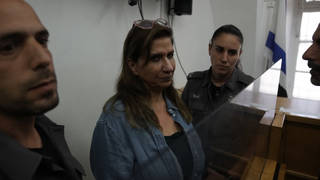
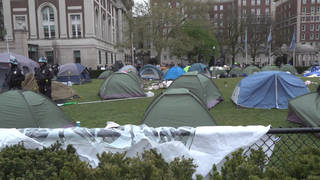
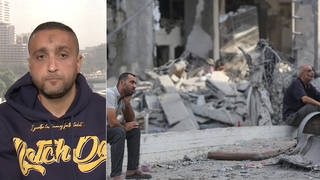
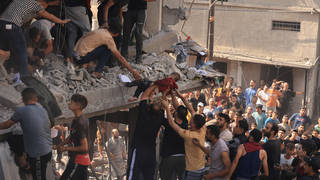





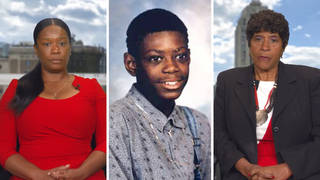

Media Options